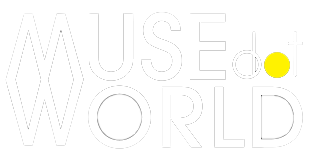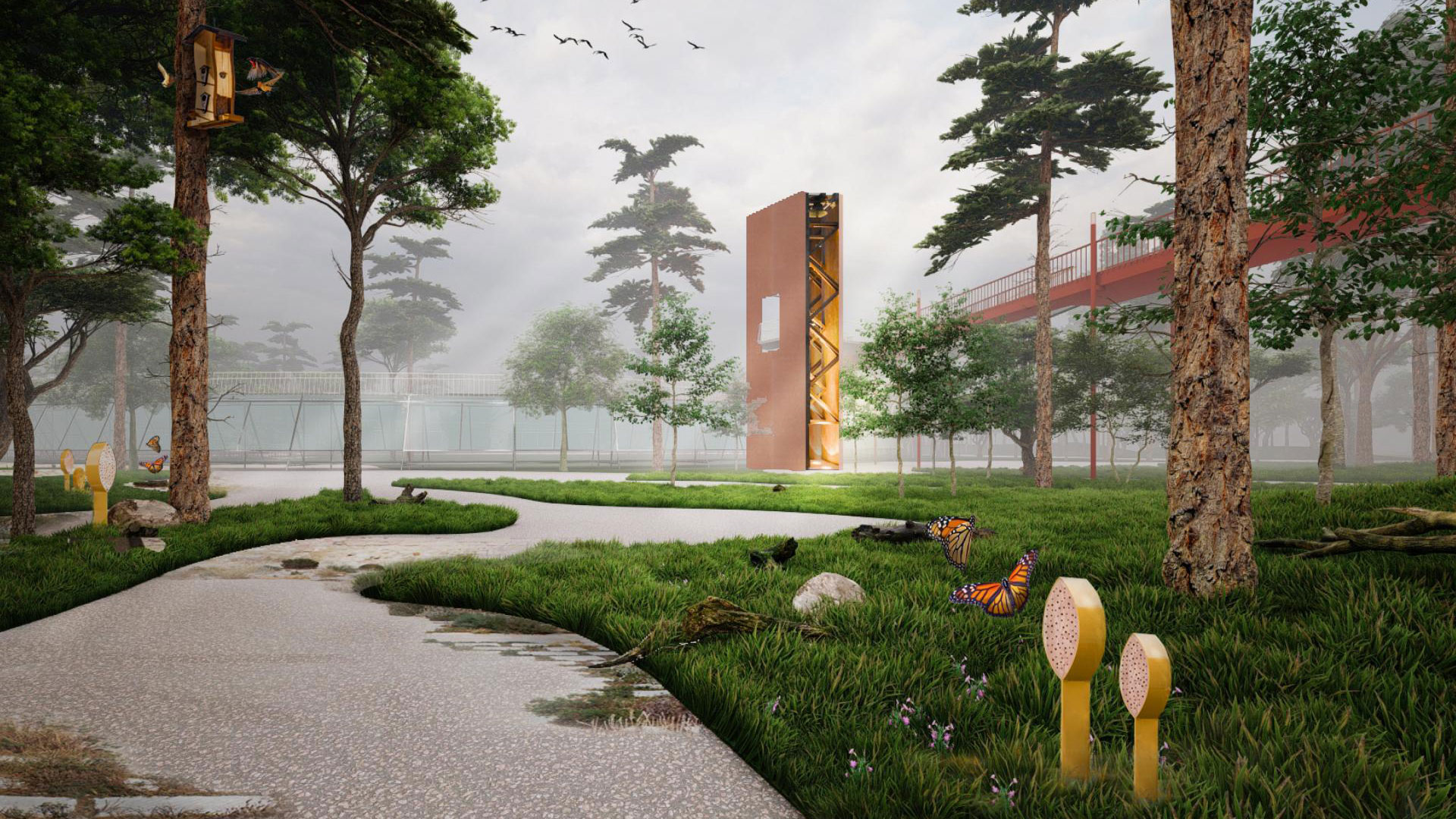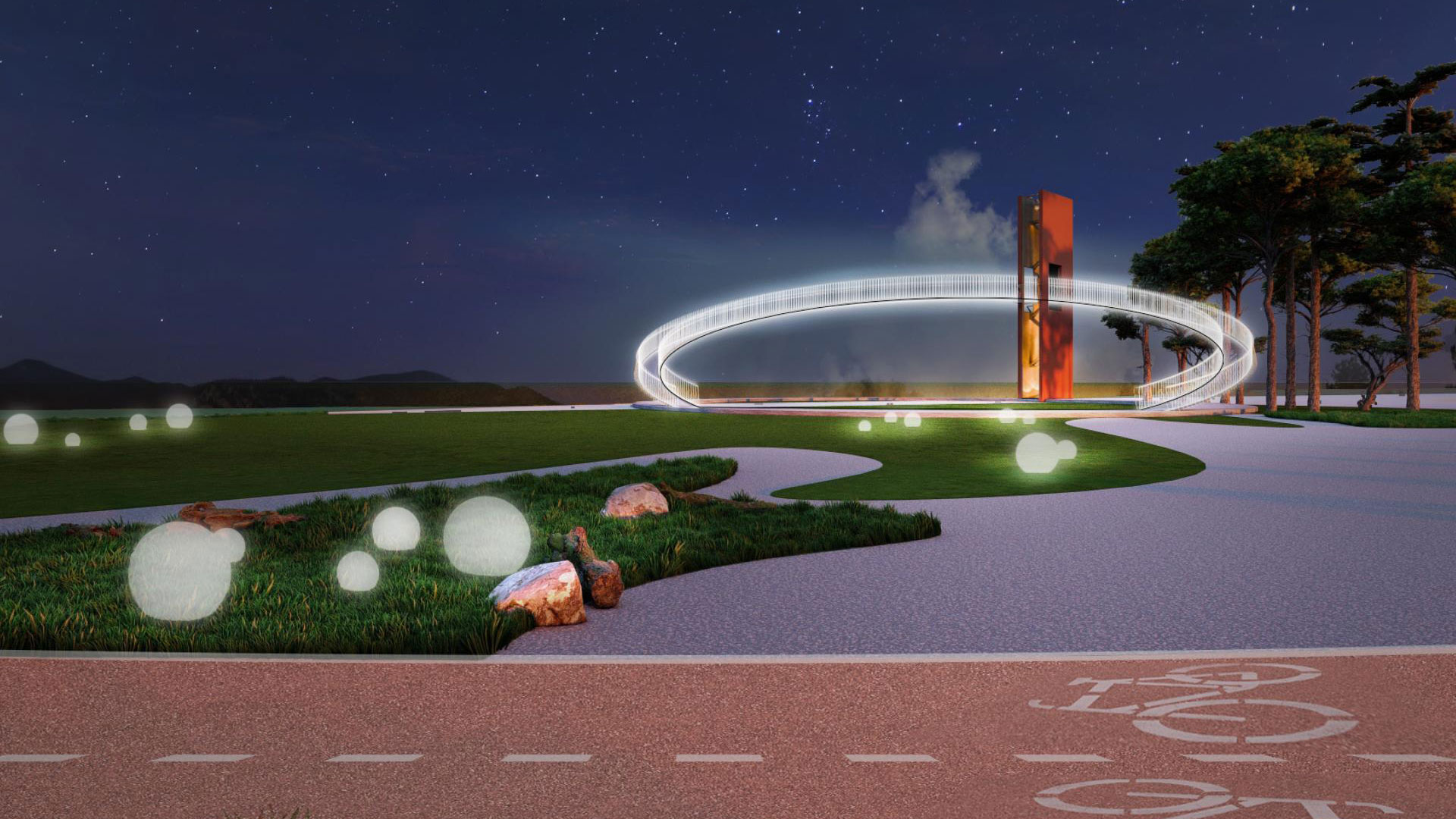Peixuan Wu Weaves Nature and Culture into the Golden Sand Waterfront

Yongkang Yu Powers AutoSync to Connect Vehicles Parking
May 13, 2025
Interview | Mei Lin Lai on the Art of Subtle yet Powerful Designs
May 13, 2025I am Peixuan Wu, a landscape designer trained both academically and professionally to navigate the intersections of ecology, culture, and community and I'm currently working at Scape Landscape Architecture.
I earned my Master of Landscape Architecture from the University of California, Berkeley, where I developed a strong foundation in ecological systems, design theory, and community-centered practice. Prior to that, I studied architecture and urban design, which gave me a broad understanding of spatial storytelling and the built environment across scales.
My design approach is grounded in a passion for creating spaces that harmoniously blend ecological restoration with social engagement. Whether working on waterfronts, urban plazas, or cultural landscapes, I am deeply interested in how design can foster long-term environmental resilience while nurturing collective memory and belonging.
This belief guides my work—translating complex site systems and cultural narratives into compelling, restorative landscapes.
Being recognized by the MUSE Design Awards is both an honor and an affirmation. It’s incredibly meaningful to see work rooted in ecological care and community connection resonate on an international platform. To me, this recognition is not just about celebrating a project—it’s about affirming a design ethos that values resilience, place-based thinking, and social engagement.
It also represents a collective achievement. Landscape architecture is inherently collaborative, and this award honors the many voices—colleagues, mentors, community members—that have shaped the work along the way. It encourages me to keep pushing boundaries with curiosity, humility, and purpose.
This recognition has been deeply affirming for both my personal journey and our team’s shared vision. It celebrates the power of interdisciplinary collaboration—our project was shaped by the combined efforts of Liwei Shen, an urban designer; Jiayu Zhu, an architecture designer; and Hao Wang, a PhD in environmental planning.
Together, we brought our diverse perspectives into dialogue, guided by a shared commitment to ecological intelligence and community-centered design.
The award has already sparked conversations and new opportunities—from invitations to speak to potential project leads—and more importantly, it has given us the confidence to keep trusting our instincts. It reminds us that design grounded in care, research, and curiosity can resonate widely.
And that staying true to what we love—whether it's coastal ecologies, cultural memory, or speculative landscapes—can lead to work that is both deeply personal and publicly meaningful.
Experimentation, for me, often begins with curiosity rather than certainty. It’s a way to test ideas through making—especially when dealing with abstract concepts like time, change, or memory. In my practice, I turn to materials like clay and ceramic as tools to physically explore topography, erosion, and spatial narratives.
Working with my hands helps me think through landscape not just as a plan, but as something lived and shaped over time. One example is a speculative project I submitted for LA+ EXOTIQUE, where I imagined a botanical garden nestled within a sinkhole landscape. I wasn’t trying to control the form entirely—instead, I used clay models to explore how soil might shift, how water might pool, or how plantings might adapt to unstable terrain.
While the concept was ambitious, the process itself was grounding. It reminded me that even small, tactile experiments can lead to richer and more empathetic design thinking.
One of the most unusual and meaningful sources of inspiration came from traditional weaving techniques—specifically, how fibers are interlaced to create both structure and softness. In a recent concept titled Interwoven: A Rooted Dialogue, I drew inspiration from both local weaving craft and the hidden networks of underground root systems.
At first glance, these two sources might seem unrelated. But as I studied their patterns—how roots meander, how threads bend and hold—I saw a metaphor for how communities and ecologies are deeply interconnected. This led to a design language that was less about fixed geometry and more about entanglement, memory, and support.
It reminded me that inspiration doesn’t always need to be grand or visible—sometimes the quiet, rooted systems hold the deepest stories.
I wish more people understood how non-linear and layered the design process really is. It’s not just about producing polished visuals or arriving at a clear solution right away—it’s about sitting with uncertainty, revisiting assumptions, and being open to evolving ideas over time.
Designing a landscape means listening carefully: to the site, to the people who know it intimately, to the histories that shape it, and to the ecologies that sustain it. It often requires holding conflicting needs in tension and allowing space for complexity. What might seem like a simple gesture above ground could be rooted in months of conversation, iteration, and quiet study.
There’s a quiet patience to the process that I find beautiful—and I think that’s something worth sharing more openly. For instance, in the winning entry of "Revitalizing the Golden Sand Waterfront" project in Lignano Sabbiadoro, our interdisciplinary team—comprising urban designers, architects, and environmental planners—engaged in continuous dialogue and experimentation. We explored various concepts, such as integrating elevated pathways and tidal theaters, to harmonize tourism, culture, and ecology along the coastline.
This process involved revisiting and refining ideas to ensure they resonated with the site's natural and cultural context. Understanding that design evolves through such dynamic interactions can foster greater appreciation for the depth and nuance involved in creating spaces that are both functional and meaningful.
For me, it’s less about choosing between the two, and more about building mutual understanding. I see the design process as a dialogue—where part of our responsibility as designers is to translate complex ideas into something legible, meaningful, and aligned with a client’s values and vision. That doesn’t mean compromising design integrity, but rather revealing its relevance in ways that resonate.
In practice, this often means listening closely to the client’s priorities, then finding unexpected ways to elevate those needs through design. I’ve found that when we approach challenges with curiosity—offering alternatives, drawing from research, or simply storytelling through diagrams—we’re able to unlock more ambitious outcomes together.
Often, those conversations lead to stronger outcomes—because when a client feels heard and invested, they’re more open to taking risks alongside you.
Staying true to an idea doesn’t always mean defending a fixed vision; sometimes it’s about protecting the core intention, even if the form changes. That flexibility, balanced with clarity of purpose, is what keeps the work both grounded and imaginative.
One of the biggest challenges was working across time zones and disciplines—our team was fully remote and came from different fields: Liwei Shen (urban design), Jiayu Zhu (architecture), Hao Wang (environmental planning), and myself from landscape. While this brought richness to the work, it also meant navigating different ways of thinking, communicating, and approaching design problems.
At times, it felt sweet and bitter—there was excitement in the diversity of ideas, but also tension when we couldn’t align right away. What helped us overcome that was trust and a shared respect for each other’s strengths. We learned how to slow down and really listen, to let ideas sit before reacting. In the end, that process made the design stronger—more layered, more considered. It reminded me that good collaboration is less about speed and more about generosity and patience.
The second challenge was one we felt deeply—we weren’t able to visit the site in Lignano Sabbiadoro in person due to the tight project timeline. That absence was especially hard because our design relied on a sensitive reading of the site’s coastal ecology and seasonal patterns. There’s so much nuance that you miss when you can’t walk the ground, feel the wind, talk to local residents.
To bridge that gap, we relied on a layered strategy: extensive mapping, video footage, local climate and tourism data, historical aerials, and conversations with people familiar with the region. We also designed iteratively, often cross-checking our assumptions with environmental precedent studies from similar Adriatic coastlines. It wasn’t a perfect substitute for being there—but we stayed committed to grounding the design in lived rhythms, not just visual impressions.
In the end, those limitations pushed us to pay even closer attention. We became more deliberate in how we framed every intervention—asking not just what would look good, but what would truly belong to the place. That shift, I think, made the project more honest and more resonant.
When I hit a creative block, I try not to force a solution. Instead, I shift my attention—often toward other forms of art or design that aren’t directly tied to landscape. I’ve found that soaking myself in furniture design, ceramics, or land art helps me see space, form, and materiality from a fresh perspective. It’s a kind of positive distraction—stepping sideways rather than pushing forward.
These moments allow for unexpected ideas to surface. Sometimes it’s a texture, a curve, or just the quiet patience of working with clay that unlocks something in my design thinking. I’ve learned to leave room for that kind of free growth—where creativity doesn’t come from pressure, but from reconnecting with what first made me curious in the first place.
A lot of my design instincts trace back to childhood. My parents worked in the railway industry, and growing up, I often traveled with them across different parts of the country. I didn’t realize it at the time, but those train rides gave me a way of seeing the world—watching landscapes shift slowly, observing how people inhabit space differently from one place to the next. I became deeply aware of how land holds memory, how movement reveals nuance, and how no place is ever static.
That experience has stayed with me. In my design work, I’m drawn to places where layered histories, ecologies, and communities intersect. I care about transitions—between wet and dry, public and intimate, natural and constructed—and I try to design with humility, leaving space for change, growth, and interpretation.
At the core, I value attentiveness and care. I want the landscapes I work on to feel grounded, responsive, and generous—just like those train rides that quietly taught me how to look.
Start by believing in your own perspective. Design is personal, and your experiences, questions, and values are what make your work meaningful. Advocate for yourself—your ideas, your time, your boundaries—and don’t be afraid to take up space. Success doesn’t always come from being the loudest in the room; sometimes it’s about being the most attentive, the most consistent, or the most quietly courageous.
Stay resilient, because the path won’t always be easy. Creative work is full of uncertainty and revision, but that’s also where growth happens. Stay curious. Keep learning—especially as landscape architecture evolves to meet the challenges of climate, equity, and biodiversity.
And when you can, connect with mentors who truly inspire you. They don’t have to be in your field. What matters is that they help you see more clearly, ask better questions, and move forward with both humility and confidence.
Success isn’t just about individual achievement—it’s about helping shape a more inclusive and dynamic profession for everyone.
It’s hard to choose just one, but I would love to collaborate with either Cai Guoqiang or Michael Heizer—artists whose work engages land and scale in radically different but equally compelling ways.
Cai’s work, with its ephemeral gestures and deep ties to cultural memory, makes me wonder how narrative, ritual, and landscape can come together in temporal yet powerful forms. On the other hand, Heizer’s monumental land interventions speak to permanence, mass, and a kind of raw spatial clarity that landscape architecture often dances around but rarely confronts so directly.
What draws me to both is the possibility of translating those artistic instincts—whether rooted in performance, material, or absence—into the language of public landscapes. I’m curious about how landscape architecture can stretch beyond conventional boundaries while still being grounded, accessible, and lasting.
Collaborating with artists like them would be a way to explore how other media reflect back onto land, not just as background, but as medium and message.
I wish more people would ask, “What do you hope people will feel when they experience your landscapes?”
For example, in the Golden Sand Waterfront project, our goal wasn’t just to restore ecology or improve public access—it was to create a space where people could feel held by the land. A place that welcomes both locals and visitors, where the shifting dunes, the movement of water, and the softness of sand all speak quietly to the rhythms of daily life.
But really, that question stretches across all my work. Whether I’m imagining a coastal wetland, a transitional garden, or a speculative landform, I always come back to one thing: How does this space care for the people, species, and histories it holds? I’m drawn to designs that are attentive rather than spectacular—spaces that unfold slowly, invite curiosity, and allow for change over time.
I believe landscape architecture has the power to reflect not just how we shape land, but how land shapes us. And in that exchange, there’s room for healing, memory, and quiet joy.
Peixuan Wu
Peixuan Wu, a landscape designer at Scape Landscape Architecture, blends ecology, culture, and community in her work. She focuses on creating spaces that merge ecological restoration with social engagement, fostering resilience and a sense of belonging.
Explore the journey of Meichen Liu, the Silver Winner of the 2025 MUSE Design Awards. She views design as a poetic solution to life’s puzzles. While her education provided the tools, everyday details—like hands gripping cups on subways or old objects as planters—spark her creativity. For her, design weaves empathy into life, creating with soul.




